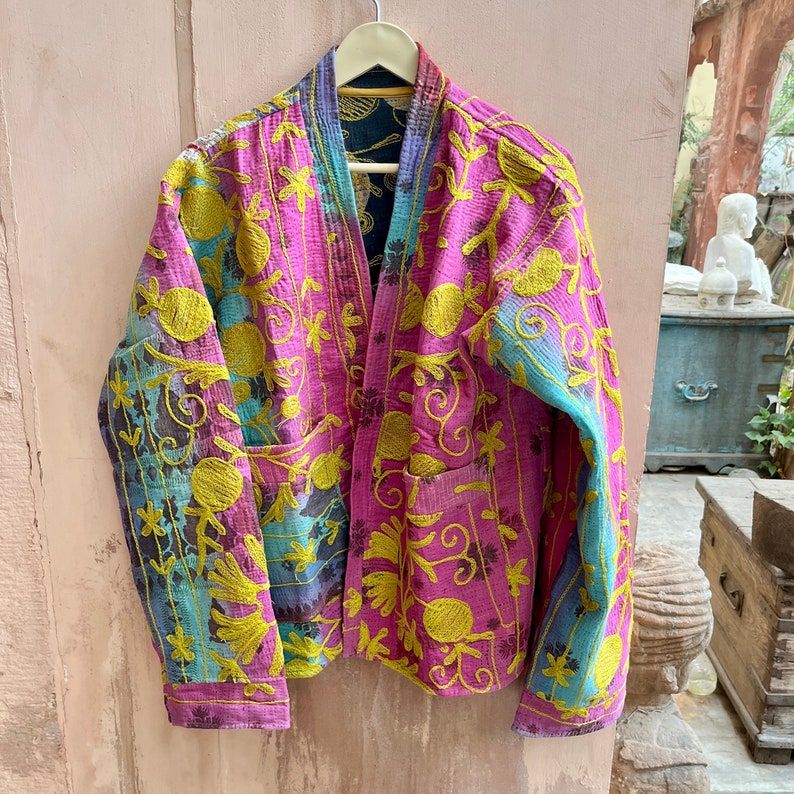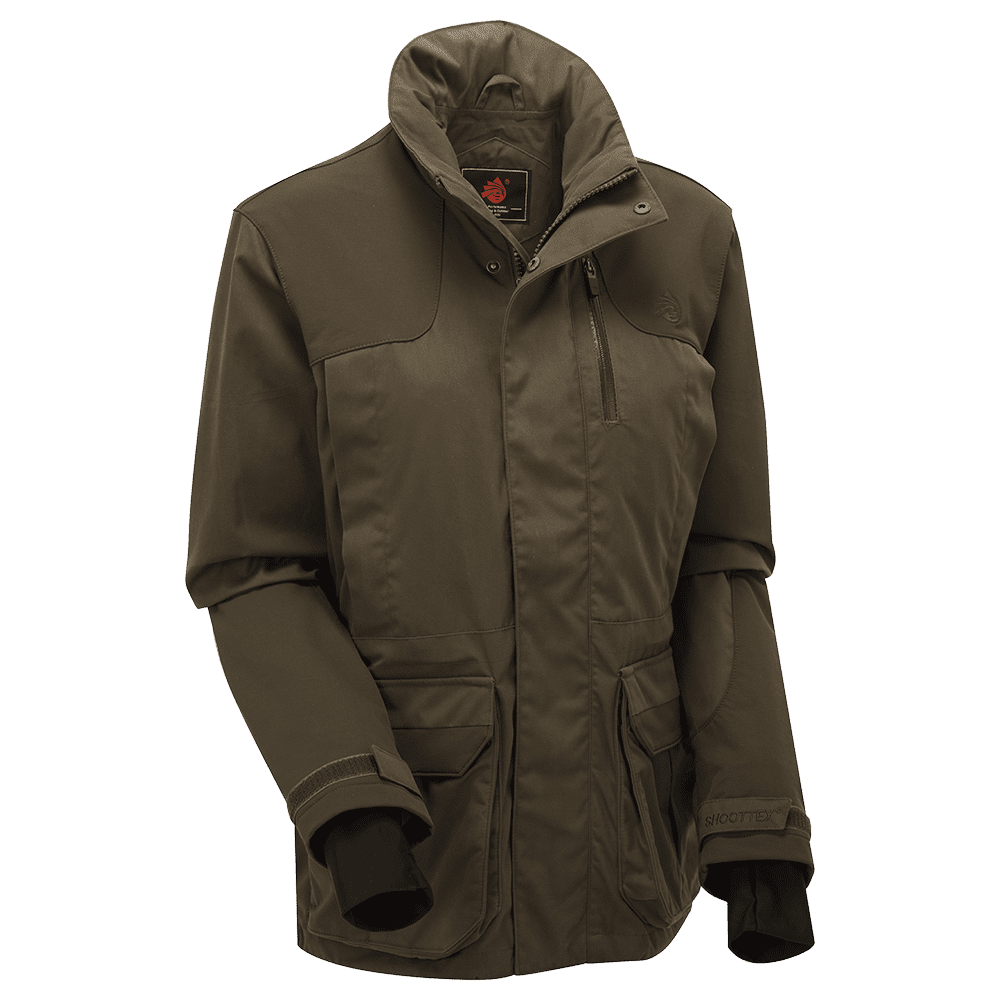Traditional jacket women have long been celebrated for their timeless elegance and cultural significance. These garments are more than just clothing; they represent the rich history and craftsmanship of various cultures around the world. Whether you're a fashion enthusiast or someone looking to embrace cultural heritage, traditional jackets for women offer a unique blend of style and substance that appeals to everyone.
From the intricate embroidery of Indian kurtas to the sophisticated tailoring of Japanese haori, traditional jackets for women reflect the diverse tapestry of global fashion. Each piece tells a story, showcasing the artistry and traditions passed down through generations. In this article, we will explore the world of traditional jackets, uncovering their origins, styles, and the reasons why they continue to captivate fashion lovers worldwide.
Join us as we delve into the fascinating world of traditional jacket women, where history, culture, and fashion intersect. By the end of this article, you'll have a deeper appreciation for these timeless garments and the role they play in preserving cultural identity. Let's begin our journey!
Read also:Victoria Secret Halloween Socks The Ultimate Guide For Festive Footwear
Table of Contents:
- Biography of Traditional Jackets
- History and Origins
- Styles and Variations
- Materials and Craftsmanship
- Cultural Significance
- Modern Interpretation
- Maintenance and Care
- Fashion Trends
- Sustainability and Ethical Fashion
- Conclusion
Biography of Traditional Jackets
Traditional jackets for women have a storied past that dates back centuries. These garments are not just pieces of clothing but symbols of cultural identity and heritage. Below is a brief overview of their journey through time:
Historical Timeline
Traditional jackets have evolved significantly over the years, adapting to changing fashion trends while retaining their core cultural essence. Here are some key milestones:
- 17th Century: The rise of tailored jackets in Europe, influenced by military uniforms.
- 19th Century: The introduction of embroidered jackets in Asia, particularly in India and China.
- 20th Century: The global influence of traditional jackets, with designers incorporating them into high fashion.
History and Origins
The origins of traditional jacket women can be traced back to various regions around the world. Each culture has its unique take on these garments, shaped by climate, available materials, and societal norms.
Regional Influences
From the Middle East to Southeast Asia, the design and function of traditional jackets vary widely:
- Middle Eastern Abaya: A long, flowing jacket worn as a symbol of modesty.
- Chinese Cheongsam: A fitted jacket with intricate patterns, often worn during special occasions.
- Japanese Kimono Jacket: Known as haori, this lightweight jacket is a staple in Japanese attire.
Styles and Variations
Traditional jacket women come in a variety of styles, each with its unique characteristics. Let's explore some of the most popular ones:
Read also:Faja For Dress Your Ultimate Guide To Enhancing Your Silhouette
Popular Styles
- Indian Kurtas: Known for their vibrant colors and elaborate embroidery.
- Moroccan Djellaba: A hooded jacket that offers both style and functionality.
- Turkish Caftan: A luxurious jacket often adorned with gold thread and silk.
Materials and Craftsmanship
The materials used in traditional jackets play a crucial role in their durability and aesthetic appeal. High-quality craftsmanship ensures that these garments stand the test of time.
Common Materials
Here are some of the most commonly used materials in traditional jacket women:
- Silk: Known for its luxurious sheen and softness.
- Cotton: A breathable fabric ideal for everyday wear.
- Wool: Perfect for colder climates, offering warmth and comfort.
Cultural Significance
Traditional jacket women hold immense cultural significance, often symbolizing identity, status, and tradition. They are worn during important ceremonies and festivals, reinforcing their role in cultural preservation.
Cultural Celebrations
From weddings to religious festivals, traditional jackets play a vital role in cultural celebrations:
- Indian Weddings: Brides often wear intricately designed jackets as part of their ensemble.
- Chinese New Year: Brightly colored jackets are worn to usher in good fortune.
- Japanese Cherry Blossom Festival: Haori jackets are a common sight during this spring celebration.
Modern Interpretation
In recent years, designers have reimagined traditional jacket women, blending them with modern aesthetics. This fusion has made them more accessible to a global audience.
Contemporary Designers
Some of the most innovative designers in this space include:
- Sonam Kapoor: An Indian designer known for her fusion of traditional and modern styles.
- Yohji Yamamoto: A Japanese designer who incorporates haori jackets into his collections.
- Elie Saab: A Lebanese designer who often features Middle Eastern influences in his designs.
Maintenance and Care
To ensure your traditional jacket women remains in pristine condition, proper maintenance is essential. Here are some tips:
Care Tips
- Hand Washing: For delicate fabrics, hand washing is recommended.
- Professional Cleaning: Consider dry cleaning for silk and wool jackets.
- Storage: Store jackets in a cool, dry place to prevent damage.
Fashion Trends
Traditional jacket women continue to influence modern fashion trends. Their timeless appeal makes them a staple in many wardrobes.
Current Trends
Here are some of the latest trends in traditional jackets:
- Minimalist Designs: Simple yet elegant jackets are gaining popularity.
- Sustainable Fabrics: Eco-friendly materials are being used more frequently.
- Mixed Textures: Combining different textures to create unique looks.
Sustainability and Ethical Fashion
As awareness about sustainability grows, many brands are focusing on ethical fashion. Traditional jacket women are at the forefront of this movement, with artisans using eco-friendly materials and fair trade practices.
Supporting Artisans
By purchasing traditional jackets from ethical brands, you support local artisans and help preserve cultural heritage:
- Ethical Brands: Look for brands that prioritize fair wages and sustainable practices.
- Local Markets: Buying directly from local markets ensures that artisans receive fair compensation.
Conclusion
Traditional jacket women are more than just garments; they are a celebration of culture, history, and artistry. From their rich origins to their modern interpretations, these jackets continue to captivate fashion enthusiasts worldwide. By embracing traditional jackets, we not only enhance our wardrobes but also support the preservation of cultural heritage.
We invite you to explore the world of traditional jacket women further. Leave a comment below sharing your favorite style or suggest other topics you'd like to explore. Together, let's celebrate the beauty and diversity of global fashion!


